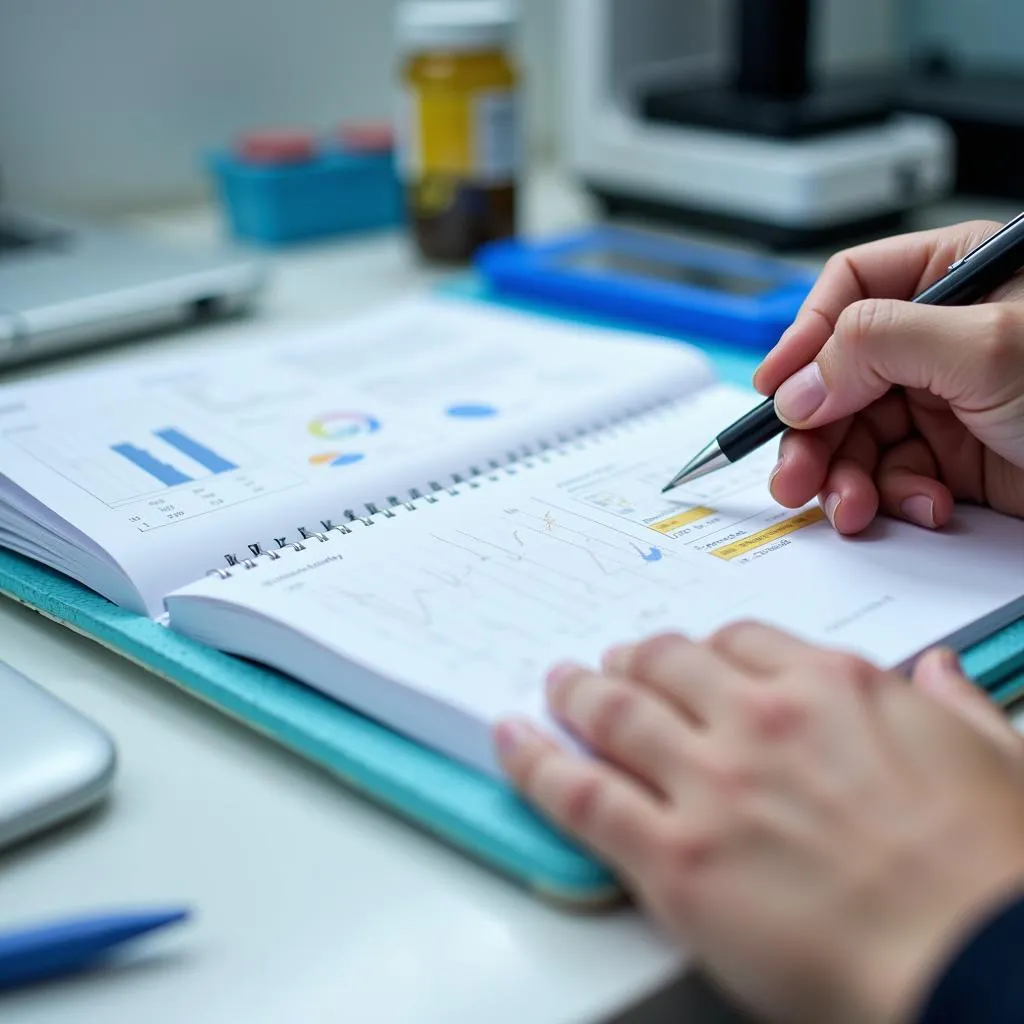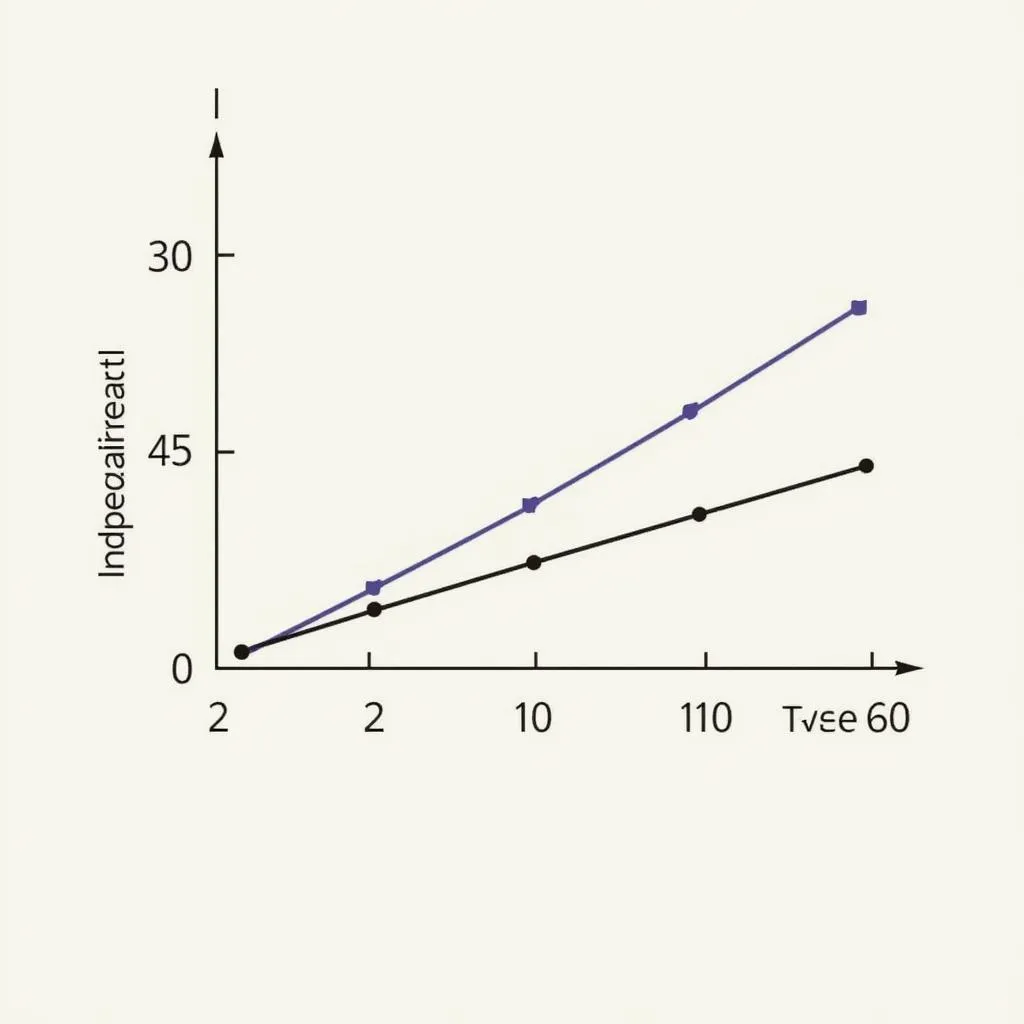In any scientific experiment, understanding the role of variables is crucial. But when we talk about the variable that’s directly manipulated, we’re focusing on the very heart of the research question: Which Variable Is Manipulated By The Researcher? This variable, often referred to as the independent variable, holds the key to unlocking cause-and-effect relationships.
 Scientist Adjusting Experiment Variables
Scientist Adjusting Experiment Variables
The Independent Variable: The Prime Mover
Think of the independent variable as the “input” or the thing you change deliberately in an experiment. It’s the potential cause that you’re investigating. By manipulating this variable, researchers aim to observe whether these changes lead to noticeable effects on another variable, known as the dependent variable (the “output” or effect).
Let’s imagine an experiment exploring the impact of different types of fertilizer on plant growth. In this scenario, the type of fertilizer used is the independent variable. The researcher carefully controls and changes this factor, applying different fertilizers to various plant groups.
Why is Identifying the Manipulated Variable So Important?
Accurately identifying the manipulated variable is paramount for several reasons:
- Establishing Causality: The primary goal of many experiments is to understand if changes in one variable (the independent variable) directly cause changes in another (the dependent variable). By manipulating the independent variable and observing any subsequent changes in the dependent variable, researchers can start to draw conclusions about cause-and-effect relationships.
- Controlling for Extraneous Variables: In a well-designed experiment, researchers strive to isolate the effects of the independent variable by controlling other potential influencing factors. Recognizing the manipulated variable helps ensure that any observed effects are more likely due to the intended manipulation and not some other hidden variable.
- Replicating and Validating Results: A clear understanding of which variable is manipulated allows other researchers to replicate the experiment. This replication is essential for validating the initial findings and ensuring the reliability of the research.
 Researcher Recording Data from Experiment
Researcher Recording Data from Experiment
Unraveling the Mystery: Identifying the Manipulated Variable
Sometimes, pinpointing the manipulated variable can be surprisingly tricky. Here’s a simple approach:
- Identify the Research Question: Start by carefully examining the research question. What is the study trying to find out? The independent variable is often embedded within the question itself.
- Look for What is Being Changed: Examine the experiment’s methodology. Focus on what the researcher is intentionally altering or manipulating. This is likely your independent variable.
- Consider the Control Group: Most experiments include a control group that serves as a baseline for comparison. The control group does not receive the experimental treatment or manipulation. Identifying what’s different between the control group and the experimental group can help you pinpoint the independent variable.
Real-World Applications: The Manipulated Variable in Action
The concept of a manipulated variable extends far beyond the confines of a laboratory. Here are a few examples of how it plays out in real-world research:
- Medical Trials: In a clinical trial testing a new drug, the manipulated variable is the administration of the drug itself. Researchers compare a group receiving the drug to a control group receiving a placebo to assess the drug’s effectiveness.
- Marketing Research: Companies often conduct A/B testing, where they manipulate variables like website design or advertising copy to determine which version performs better in terms of conversions or engagement.
- Educational Interventions: When evaluating the impact of a new teaching method, the manipulated variable is the teaching approach itself. Researchers compare student outcomes in classrooms using the new method to those using traditional methods.
 Graph Showing Relationship Between Variables
Graph Showing Relationship Between Variables
Conclusion
Understanding which variable is manipulated by the researcher, the independent variable, is essential for unraveling cause-and-effect relationships and drawing meaningful conclusions from research. By carefully controlling and manipulating this variable, scientists can shed light on how different factors influence the world around us. Whether in the controlled environment of a lab or the complexities of real-world settings, the manipulated variable remains a cornerstone of scientific inquiry.
FAQs
1. Can there be more than one manipulated variable in an experiment?
While possible, it’s generally advisable to manipulate a single variable at a time to clearly isolate its effects. Manipulating multiple variables simultaneously can make it challenging to determine which variable is responsible for the observed changes.
2. What is the difference between an independent variable and a dependent variable?
The independent variable is the variable the researcher manipulates, while the dependent variable is the variable that is measured to see if it changes as a result of the manipulation.
3. Why is it important to control for extraneous variables?
Extraneous variables are any factors other than the independent variable that could potentially influence the dependent variable. Controlling for these variables helps ensure that any observed effects are due to the manipulated variable and not some other confounding factor.
4. Can you give an example of a study with a manipulated variable in Paranormal Research?
In a study investigating the alleged effects of electromagnetic fields (EMFs) on psychic abilities, the manipulated variable could be the level of EMF exposure. Researchers might compare psychic performance in an environment with high EMF levels to performance in an environment with low or controlled EMF levels.
5. What are some common mistakes to avoid when identifying the manipulated variable?
Confusing the manipulated variable with the dependent variable is a common error. It’s also crucial to avoid mistaking extraneous variables for the manipulated variable.
Need More Insights?
For further exploration into the fascinating world of research methodologies and paranormal investigations, delve into these related articles:
Have questions or need help with your own research?
Contact us:
Phone: 0904826292
Email: research@gmail.com
Address: No. 31, Alley 142/7, P. Phú Viên, Bồ Đề, Long Biên, Hà Nội, Việt Nam.
Our dedicated team is available 24/7 to assist you.